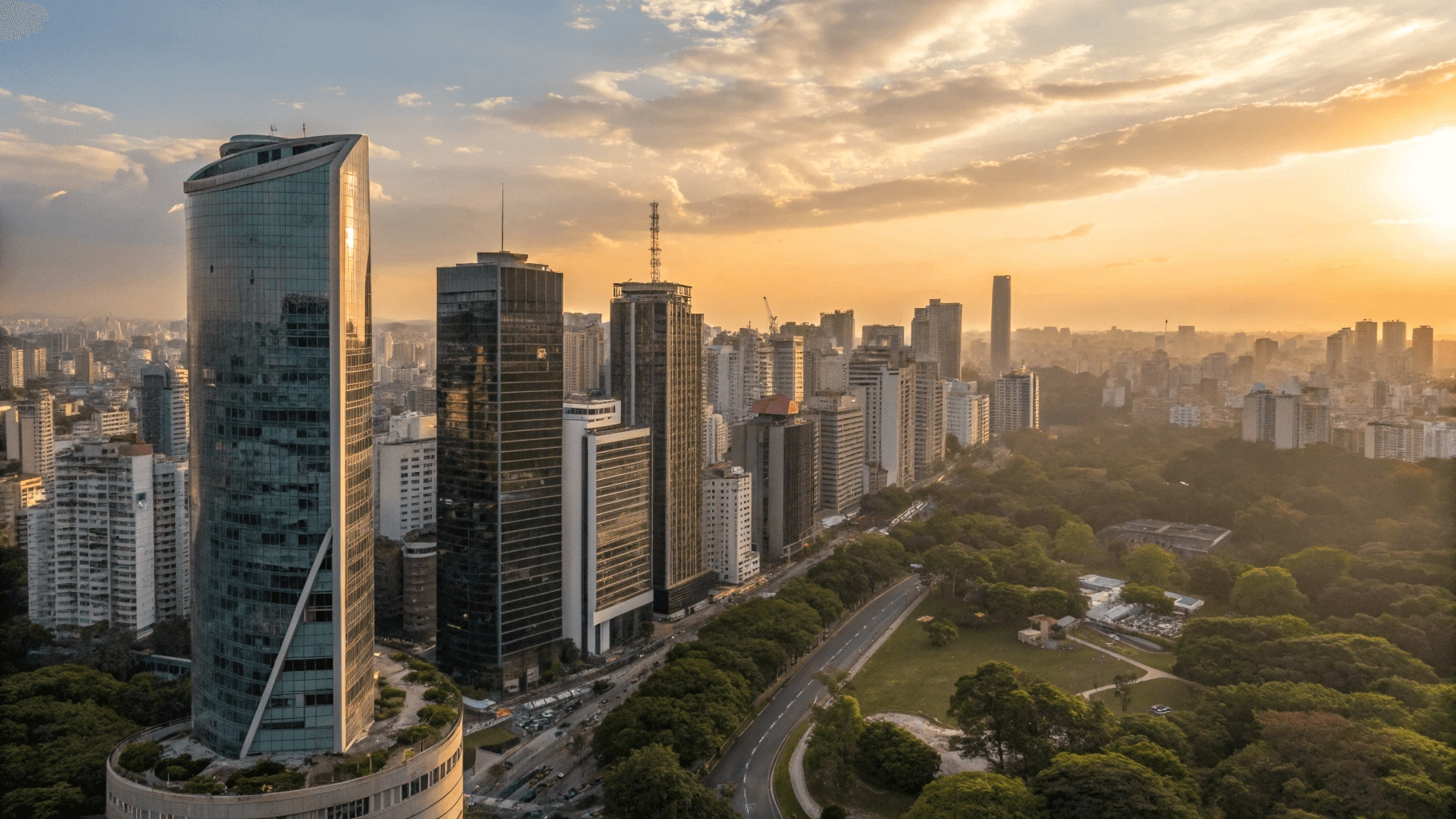Last Updated: April 2025
São Paulo, Brazil’s vibrant megalopolis, often gets overshadowed by Rio de Janeiro’s beach-centric allure. Yet, this pulsating urban center offers travelers an authentic Brazilian experience unlike any other. From world-class culinary adventures and cutting-edge art to hidden neighborhoods and cultural gems, São Paulo rewards those willing to dig deeper. This guide takes you beyond the tourist track to discover the real sao paulo brazil that only insiders know.
Table of Contents
Getting Oriented in South America’s Largest City
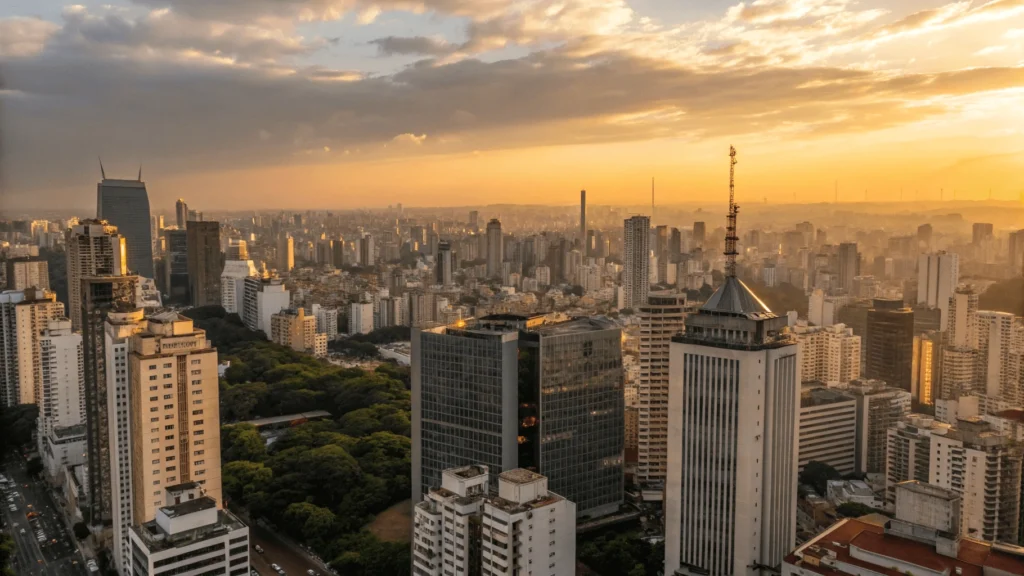
sao paulo brazil is massive—both in population (over 12 million inhabitants) and geography. Understanding the city’s layout is essential before diving into its treasures.
The city sprawls across more than 1,500 square kilometers, with neighborhoods that vary dramatically in character, safety, and attractions. Unlike cities built around geographical features, São Paulo developed in concentric rings, with Centro Histórico at its heart and districts radiating outward.
The Lay of the Land
sao paulo brazil is divided into several zones:
- Centro – The historic downtown and original city core
- Zona Sul – Affluent areas including Jardins and Itaim Bibi
- Zona Oeste – Trendy neighborhoods like Vila Madalena and Pinheiros
- Zona Norte – Less visited by tourists but home to Santana and the Sambadrome
- Zona Leste – Eastern region containing working-class neighborhoods and the Airport
Key avenues to know:
- Avenida Paulista – The financial heart and modern symbol of sao paulo brazil
- Rua Oscar Freire – São Paulo’s luxury shopping district
- Rua Augusta – Divided between high-end shopping and bohemian nightlife
When to Visit São Paulo
The city experiences a subtropical climate with distinct seasons:
| Season | Months | Weather | Notes |
|---|---|---|---|
| Summer | December-February | Hot and rainy (25-30°C) | Christmas and Carnival season |
| Fall | March-May | Moderate (18-25°C) | Fewer crowds, pleasant temperatures |
| Winter | June-August | Mild and drier (12-20°C) | Occasional cold fronts |
| Spring | September-November | Warming up (15-25°C) | Jacaranda trees bloom across the city |
Insider Tip: May and June offer the best combination of pleasant weather and fewer tourists. Avoid January if possible, as many Paulistanos (São Paulo locals) leave for summer holidays, and some smaller businesses close.
Transport: Navigating São Paulo Like a Local
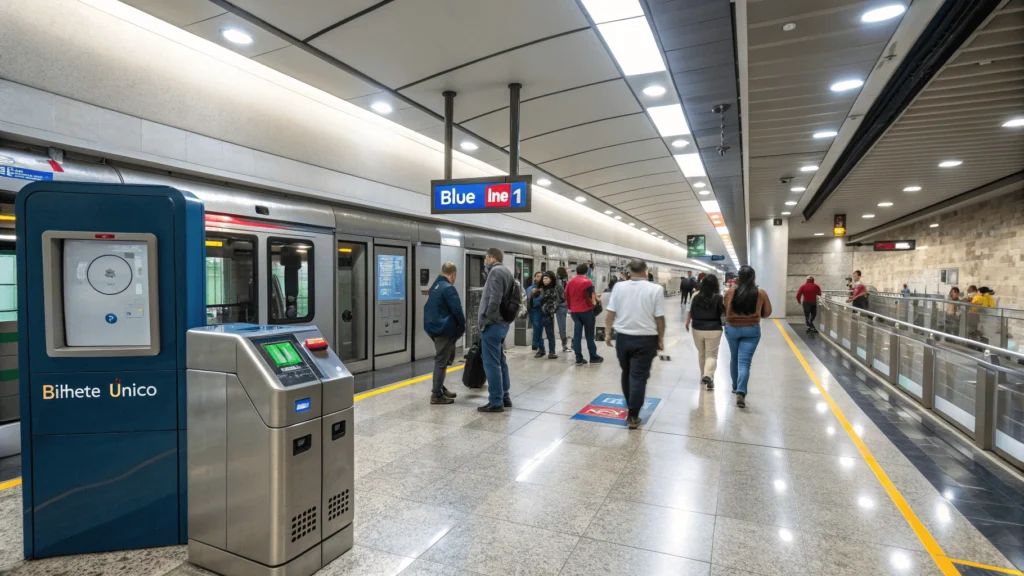
São Paulo’s traffic is notorious, but the city has an efficient public transportation system that travelers can master with a few insider tips.
The Metro System
The sao paulo brazil metro is clean, efficient, and the fastest way to traverse the city. It consists of six lines distinguished by colors:
- Line 1 (Blue) – Connects North to South
- Line 2 (Green) – Serves Avenida Paulista and Zona Oeste
- Line 3 (Red) – Links East to West through Centro
- Line 4 (Yellow) – Connects Paulista to Pinheiros
- Line 5 (Lilac) – Serves portions of Zona Sul
- Line 15 (Silver) – Monorail in eastern São Paulo
Essential Metro Tips:
- Purchase a Bilhete Único card (available at any station) to save money and time
- Avoid rush hours (7-9 AM and 5-7 PM) when trains become extremely crowded
- Metro operates from 4:40 AM to midnight (slightly shorter hours on Sundays)
- Stations announce stops in Portuguese only, so track your journey on maps
Buses and Transportation Apps
While the metro doesn’t reach all corners of the city, buses fill the gaps:
- SPTrans operates the city’s 1,300 bus lines, Schedules and route information are available on the SPTrans official website.
- Most buses have electronic displays showing destinations
- Bilhete Único works on buses too, with free transfers within a 3-hour window
Transportation Apps to Download:
- Moovit – Best for public transport navigation
- 99 or Uber – Safe and reliable ride-hailing services
- Citymapper – Combines all transport options with real-time updates
Walking and Safety Considerations
São Paulo is not particularly pedestrian-friendly due to its size, but certain neighborhoods are perfect for exploring on foot:
- Vila Madalena – Walkable, artistic neighborhood with street art and cafes
- Jardins – Upscale area with tree-lined streets and high-end shops
- Centro – Historic district manageable on foot (during daylight hours)
Safety Tips for Pedestrians:
- Keep valuables out of sight
- Use cross streets only at designated crosswalks
- Be vigilant at night, particularly in Centro and less populated areas
- Consider taking taxis/rideshares after dark
Staying Safe in São Paulo: Practical Reality vs. Reputation

São Paulo has a reputation for crime, but with sensible precautions, tourists rarely experience problems. Understanding neighborhood variations is key to staying safe.
Neighborhood Safety Breakdown
| Neighborhood | Daytime Safety | Night Safety | Notes |
|---|---|---|---|
| Jardins | Very Safe | Safe | Upscale area with security presence |
| Vila Madalena | Safe | Mostly Safe | Popular nightlife area, busier is safer |
| Pinheiros | Safe | Mostly Safe | Trendy area with good dining options |
| Centro | Exercise Caution | Avoid After Dark | Historic but has unsafe pockets |
| Liberdade | Safe | Exercise Caution | Japanese district, busy during day |
| Itaim Bibi | Very Safe | Safe | Business district with upscale dining |
Common-Sense Safety Precautions
- Valuable Management: Use hotel safes for passports and excess cash
- Phone Usage: Avoid using phones on sidewalks near streets (motorcycle snatch thefts occur)
- ATM Awareness: Use ATMs inside shopping malls or banks during daylight hours
- Transportation: Avoid unlicensed taxis; use rideshare apps or radio taxis
- Jewelry: Leave flashy jewelry at home
- Awareness: Maintain situational awareness, particularly in crowded areas
Insider Tip: If experiencing an emergency, dial 190 for police or 192 for ambulance services. For more safety tips, consult the U.S. Department of State’s Brazil travel advisory. Most tourist areas have specialized tourist police who speak English.
The São Paulo Food Scene: A Culinary Paradise
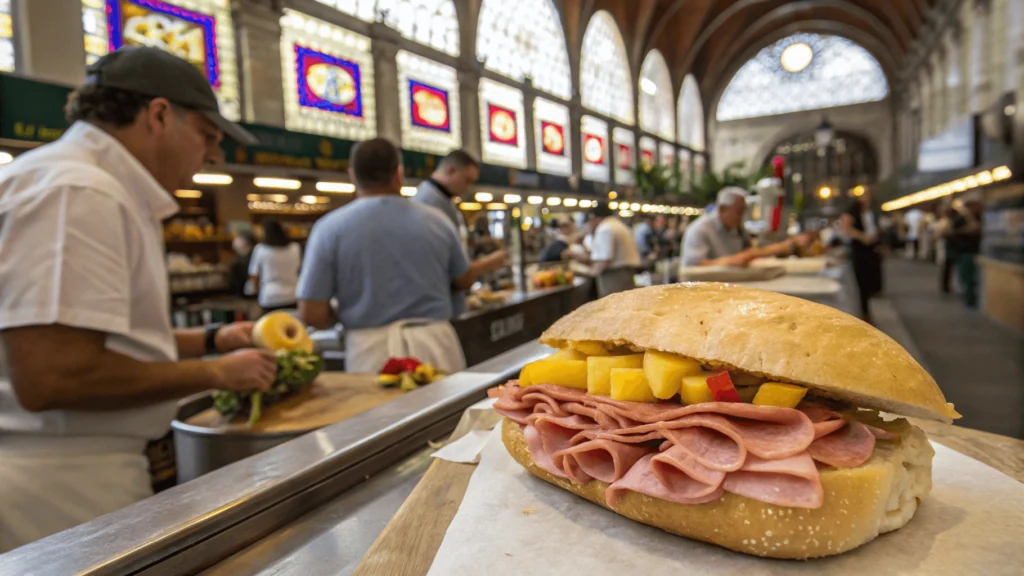
sao paulo brazil boasts one of the most diverse and sophisticated food scenes in Latin America. From street food to Michelin-starred restaurants, the city offers endless gastronomic adventures.
Must-Try Local Specialties
- Feijoada – Brazil’s national dish of black bean stew with pork, best on Wednesdays and Saturdays
- Mortadella Sandwich – Iconic sandwich found at Mercado Municipal
- Coxinha – Teardrop-shaped chicken croquettes
- Pizza São Paulo Style – Thinner than American but thicker than Italian, with unique toppings
- Pastel – Fried pastry pockets with various fillings
Culinary Hotspots Beyond the Obvious
Markets:
- Mercado Municipal (Mercadão) – Historic market with food stalls and the famous mortadella sandwich
- Feira da Liberdade – Weekend market with Japanese and Korean specialties
- Feira de Vila Madalena – Organic market with local produce (Saturdays)
Culinary Districts:
- Jardins – Home to upscale dining and award-winning restaurants
- Vila Madalena – Casual, innovative dining and craft beer scene
- Liberdade – The largest Japanese community outside Japan with authentic eateries
- Bixiga – Traditional Italian cantinas and family-style dining
Hidden Gems:
- Casa do Porco – Acclaimed pork-focused restaurant with innovative dishes
- Mocotó – Worth the journey to the outskirts for authentic northeastern Brazilian cuisine
- Balaio IMS – Beautiful café in the Instituto Moreira Salles cultural center
- Hospedaria – Celebrates regional Brazilian cuisine in a modern setting
Coffee Culture
As the world’s largest coffee exporter historically, Brazil takes its coffee seriously. Brazil remains the world’s largest coffee producer, according to the National Coffee Association. São Paulo offers exceptional coffee experiences:
- Coffee Lab – Award-winning specialty coffee shop with tasting sessions
- Octavio Café – Beautiful space with beans from their own fazenda
- King of the Fork – Third-wave coffee in a stylish setting
Insider Tip: When ordering coffee, ask for “café coado” (filtered coffee) for a traditional Brazilian brew or “café espresso” for an Italian-style espresso. “Média” is coffee with hot milk.
Cultural Experiences: Beyond Museums and Galleries
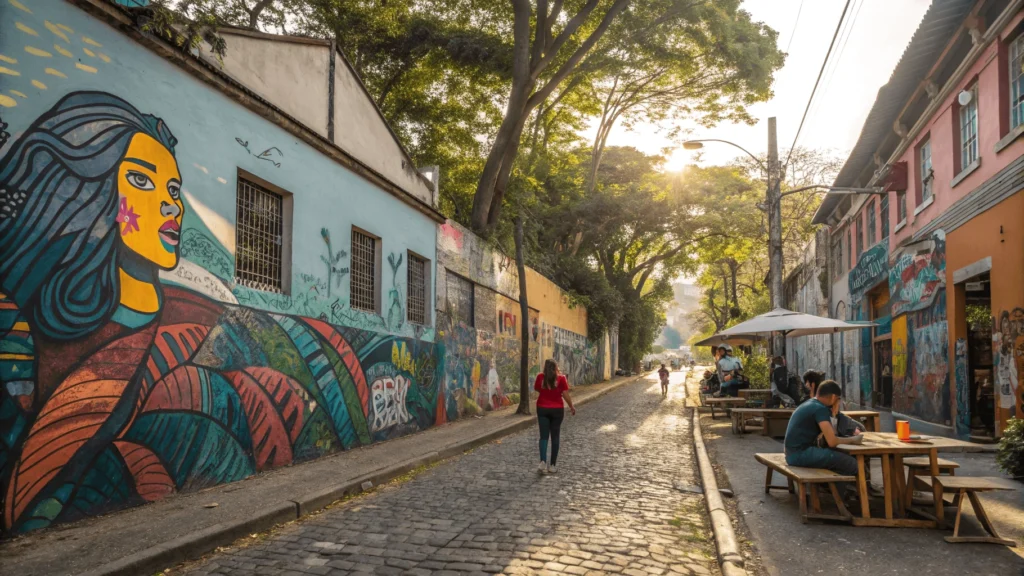
São Paulo’s cultural scene is diverse and constantly evolving. While museums are worth visiting, authentic cultural experiences extend far beyond them.
Essential Cultural Institutions
- MASP (Museu de Arte de São Paulo) – Iconic building housing Latin America’s most important art collection, Plan your visit and view current exhibitions on the MASP official website.
- Pinacoteca – Stunning collection of Brazilian art in a renovated historic building
- Instituto Tomie Ohtake – Contemporary art in an architectural landmark
- Japan House – Showcasing Japanese culture and design
- Museu do Futebol – Football museum located inside Pacaembu Stadium
Street Art and Urban Culture
sao paulo brazil has one of the world’s most vibrant street art scenes:
- Batman Alley (Beco do Batman) in Vila Madalena – Open-air gallery of colorful murals
- Avenida Cruzeiro do Sul – Massive urban art panels along the metro line
- MUBE (Brazilian Museum of Sculpture) – Outdoor sculpture garden
- Grajaú – Emerging area for street art in the southern periphery
Insider Tip: Join a street art walking tour led by local artists for context and access to lesser-known spots.
Live Music and Performance
- Sala São Paulo – Symphony hall in a converted train station with exceptional acoustics
- Audio Club – Premier electronic music venue
- Jazz nos Fundos – Intimate jazz club with excellent musicians
- Centro Cultural São Paulo – Free concerts and performances
- Sesc Pompeia – Cultural center designed by Lina Bo Bardi hosting diverse performances
Cultural Festivals Worth Planning Around
- Virada Cultural (May) – 24-hour city-wide cultural festival
- SP Restaurant Week (March and September) – Special menus at reduced prices
- São Paulo Fashion Week (Varies) – Latin America’s largest fashion event
- São Paulo International Film Festival (October) – Prestigious cinema showcase
- Festa de Nossa Senhora Achiropita (August) – Italian festival in Bixiga
Neighborhood Deep Dives: Where to Explore
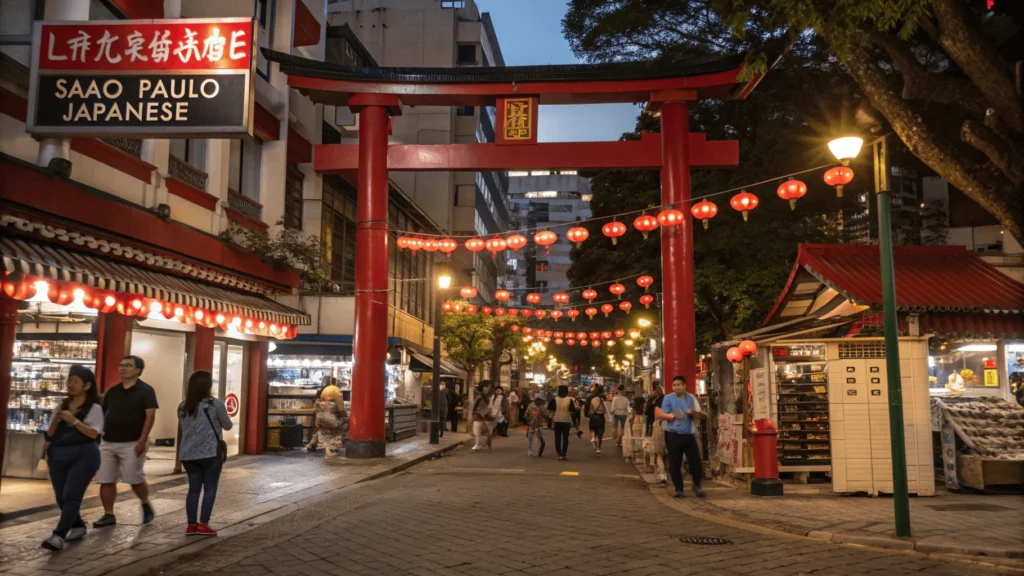
Each sao paulo brazil neighborhood has a distinct personality and charm. These are the areas that deserve your focused attention.
Vila Madalena: Bohemian Heart
This hilly neighborhood is São Paulo’s creative center, featuring:
- Colorful street art covering building facades
- Independent boutiques selling Brazilian designs
- Craft breweries and third-wave coffee shops
- Relaxed bars and live music venues
Don’t Miss:
- Sunset drinks at Ó do Borogodó
- Browsing handcrafted items at Praca Benedito Calixto Saturday market
- Coffee and people-watching at Sofá Café
- The hidden staircases connecting streets with colorful murals
Jardins: Upscale Elegance
sao paulo brazil most refined district offers:
- High-end shopping along Rua Oscar Freire
- Lush green spaces and tree-lined avenues
- Award-winning restaurants and cafés
- Art galleries and design studios
Don’t Miss:
- Strolling through Parque Trianon, a rare patch of Atlantic rainforest
- Window shopping along Rua Oscar Freire
- Dining at D.O.M., Alex Atala’s acclaimed restaurant
- Exploring the side streets off Alameda Santos for hidden boutiques
Centro Histórico: Where São Paulo Began
The historic center reveals the city’s origins and evolution:
- Neo-Gothic, Art Deco, and Modernist architecture
- Historic squares and churches
- Cultural institutions and theaters
- Bustling commercial areas
Don’t Miss:
- Pateo do Collegio, where the city was founded in 1554
- Edifício Martinelli, São Paulo’s first skyscraper
- Theatro Municipal, the opulent 1911 theater
- Viewing sao paulo brazil from the top of Edifício Itália or Farol Santander
Safety Note: While Centro is generally safe during business hours, exercise caution after dark, particularly around Praça da Sé and Luz district.
Liberdade: Japanese Cultural Enclave
Home to the largest Japanese community outside Japan:
- Japanese, Chinese, and Korean restaurants
- Asian markets and specialty shops
- Cultural centers and Buddhist temples
- Red lanterns strung across the streets
Don’t Miss:
- Weekend market around Liberdade metro station
- Traditional Japanese sweets at Manju-Ya
- Browsing manga and anime at Cultura Japonesa
- Tea ceremony at Museu da Imigração Japonesa
Pinheiros: The Trendy Epicenter
This rapidly evolving neighborhood offers:
- Innovative restaurants and cocktail bars
- Independent boutiques and concept stores
- Art galleries and design studios
- Vibrant nightlife and music venues
Don’t Miss:
- Food exploration at Mercado de Pinheiros
- Shopping for local designs at Pinheiros Baixo shops
- Cocktails at Astor or Frank Bar
- Dinner at acclaimed restaurant Tuju
Shopping: From Luxury to Local
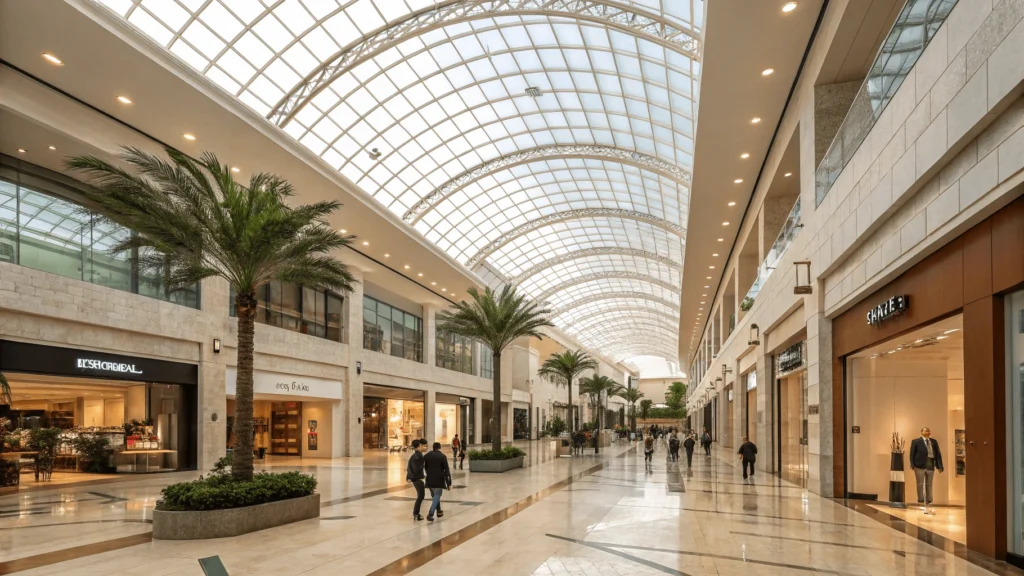
sao paulo brazil offers shopping experiences ranging from luxury international brands to unique local designs and handicrafts.
High-End Shopping
- Rua Oscar Freire – Brazil’s answer to Rodeo Drive
- Shopping Iguatemi – Brazil’s first luxury mall
- JK Iguatemi – Ultra-modern mall with exclusive brands
- Shopping Cidade Jardim – Open-air luxury shopping complex
Independent Boutiques and Local Designers
- Alameda Lorena in Jardins – Local designer boutiques
- Vila Madalena shops – Independent fashion and design
- Pinheiros Baixo – Emerging designers and concept stores
- Benedito Calixto Market (Saturdays) – Vintage items and handcrafts
Specialty and Unique Finds
- Galeria do Rock – Multi-floor mall dedicated to rock culture and alternative fashion
- Rua 25 de Março – Discount shopping district (watch your belongings in crowds)
- Liberdade markets – Japanese goods and specialty items
- Bom Retiro – Wholesale fashion district open to the public
Insider Tip: Many shops charge a significant “tourist price” for credit card purchases. Politely ask “Tem desconto para pagamento em dinheiro?” (Is there a discount for cash payment?) to potentially save 10-15%.
Day Trips from sao paulo brazil
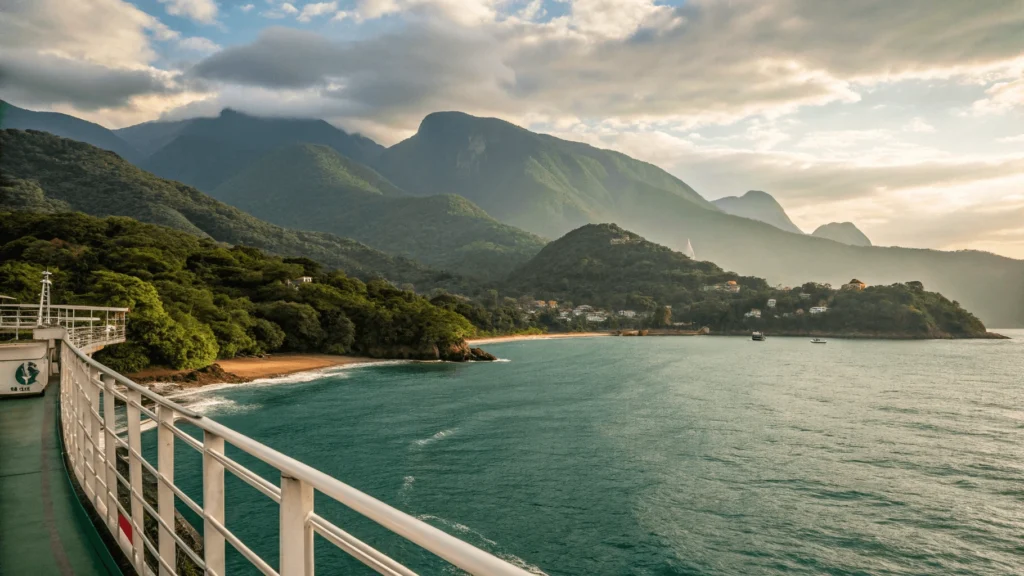
When city life becomes overwhelming, these accessible escapes offer a refreshing change of pace.
Beach Escapes
- Guarujá – The closest beach destination (1.5 hours)
- Santos – Historic port city with beaches (1.5 hours)
- Ilhabela – Island paradise with pristine beaches (3 hours + ferry)
- Ubatuba – Multiple beaches surrounded by Atlantic rainforest (3 hours)
Mountains and Nature
- Campos do Jordão – Brazilian “Swiss” mountain town (2.5 hours)
- Serra da Cantareira – Atlantic rainforest reserve on the city outskirts
- Paranapiacaba – Historic British railway village with fog-shrouded mountains (1.5 hours)
- Juquitiba – River rafting and outdoor adventures (1.5 hours)
Historic Towns
- Embu das Artes – Colonial town known for crafts and weekend art fair (45 minutes)
- São Luiz do Paraitinga – Perfectly preserved colonial architecture (2.5 hours)
- Santana de Parnaíba – Historic buildings and traditional festivals (1 hour)
Insider Tip: For day trips, consider renting a car for flexibility, as public transportation options can be limited. Always leave early to avoid the notorious sao paulo brazil traffic when exiting the city.
Practical Tips for a Smooth São Paulo Experience
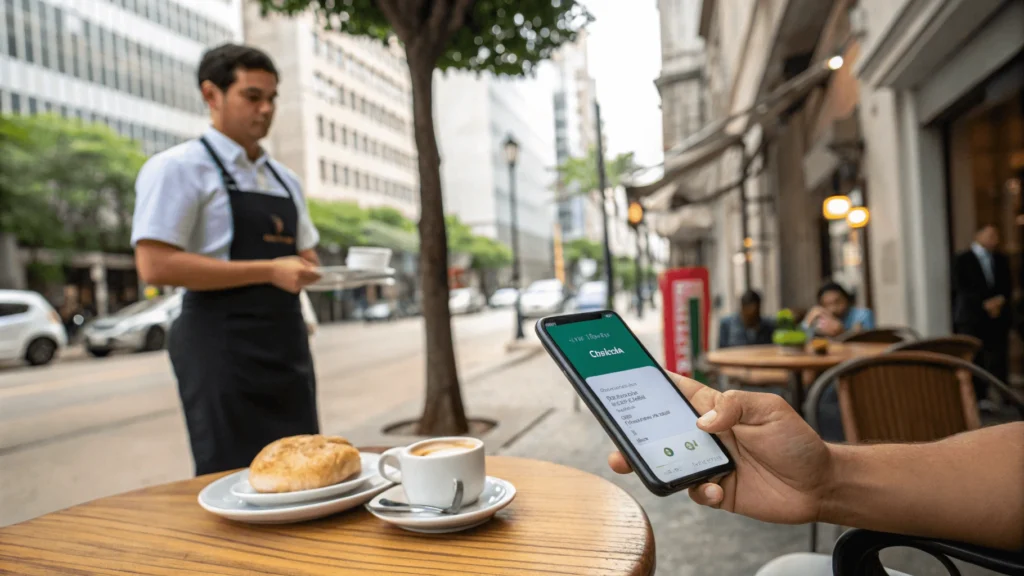
Language Navigation
While English isn’t universally spoken, you can navigate with these strategies:
- Learn basic Portuguese phrases (Brazilians appreciate the effort)
- Download Google Translate with Portuguese offline capability
- In upscale areas and tourist establishments, English is more common
- Use pointing and simple gestures when language fails
Essential phrases:
- “Bom dia/tarde/noite” (Good morning/afternoon/evening)
- “Por favor” (Please)
- “Obrigado/a” (Thank you – use “a” if you’re female)
- “Quanto custa?” (How much does it cost?)
Money Matters
- Major credit cards are widely accepted in established businesses
- Always carry some cash for small purchases and transportation
- ATMs are plentiful but use ones inside banks or shopping centers
- Tipping is not obligatory but appreciated (10% is standard in restaurants and is often included in the bill as “serviço”)
Weather Preparation
São Paulo’s weather can be unpredictable:
- Carry a small umbrella year-round
- Dress in layers, as temperatures can vary significantly from morning to evening
- Air conditioning can be intense in shopping malls and upscale restaurants
- Sunscreen is necessary even on cloudy days due to the high UV index
Connectivity
- Free WiFi is available in many cafés, restaurants, and shopping malls
- Consider purchasing a local SIM card (Claro, Vivo, or TIM) for data
- Most hotels offer reliable internet connections
- Download offline maps before venturing into areas with spotty coverage
Frequently Asked Questions About São Paulo
Is São Paulo safe for tourists? Yes, with proper precautions. Stick to recommended neighborhoods, avoid displaying valuables, and use registered transportation, especially at night. Most tourist areas have visible security personnel.
When is the best time to visit São Paulo? April-May and September-October offer pleasant temperatures and fewer rain showers. July is the driest month but can be cooler. December-March has the most rainfall but also vibrant summer festivals.
How many days should I spend in São Paulo? A minimum of 3-4 days is recommended to experience the city’s highlights. Add additional days if you plan to explore surrounding areas or immerse yourself in specific interests like art or food.
Is São Paulo expensive? By Brazilian standards, yes, but compared to major global cities, it can be moderate. Luxury experiences are available but so are budget-friendly options. Transportation and local food can be quite affordable.
Do I need to speak Portuguese? While not essential, knowing basic phrases helps tremendously. In tourist areas and upscale establishments, you’ll find English speakers, but venturing into local neighborhoods will require some Portuguese or good translation apps.
Is the water safe to drink? Technically yes, but most locals and visitors prefer bottled water due to the taste and variable quality of tap water. Most restaurants automatically serve filtered or bottled water.
How should I dress in sao paulo brazil? Paulistanos tend to dress fashionably casual. Jeans and nice tops are acceptable almost everywhere. For upscale restaurants, business casual is appropriate. Shorts and flip-flops mark you as a tourist but are acceptable in casual settings.
Final Insider Tips
- São Paulo operates at its own pace – Dinner typically starts after 8 PM, nightlife after 11 PM
- Sundays are family days – Many businesses close, but parks and cultural venues come alive
- Holiday planning is essential – Check for local holidays before booking, as the city transforms
- Embrace the concrete jungle – São Paulo’s charm lies in its urban energy, not natural beauty
- Connect with locals – Paulistanos are proud of their city and eager to share insider knowledge
São Paulo rewards curious travelers willing to look beyond the obvious. By embracing the city’s complexity and following these insider tips, you’ll discover the vibrant pulse that makes São Paulo one of Latin America’s most exciting urban destinations.

